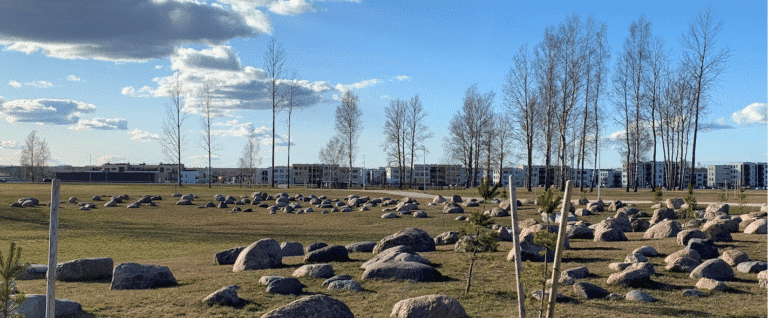
Participatory Budgeting – a powerful tool to improve engagement and policy design
| Activities are responsive to the following SDGs of the United Nations: 11 – 16 – 17 |
In a democratic society, the quality of the relationship between governments and citizens is a key talking point – and if not, most probably it should. Across the layers of governance, municipalities certainly represent the closest governmental actor to citizens. Such proximity not only works as the testing ground for state-to-people interactions but also as an incubator for innovative ideas directly sourced from the citizenry.
With its Participatory Budgeting (PB) initiative, the city of Tartu and e-Governance Academy (eGA) rightfully represent a success story from Estonia in this respect. Kristina Reinsalu, Programme Director of e-Democracy at eGA, has been one of the main initiators and facilitators of the project. With her, we explore how engaging citizens in decision-making unlocks hidden resources for local administrators and dramatically contributes to community building.
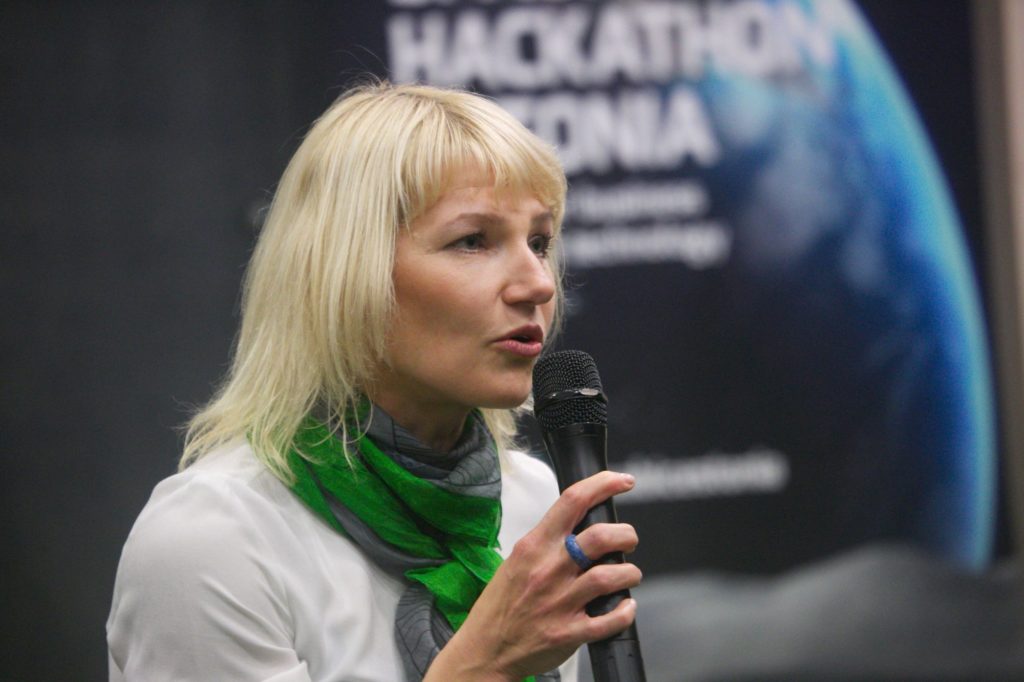 Kristina Reinsalu in Tartu PB. Photo: Ove Maidla
Kristina Reinsalu in Tartu PB. Photo: Ove Maidla
A virtuous democratic exercise for citizens and administrators
First and foremost, Participatory Budgeting means opening government bodies to their fullest. Since 2013, the initiative gives the citizens of Tartu the possibility to gain access to a portion of the municipality’s investment budget for the following year. This year (2020) the process started on 1 May despite of corona crises.
People can formulate and present proposals of public interest for the allocation of such budget and, once revised, these are up for voting. Finally, based on the results of a popular consultations, administrators commit to bringing to reality the winning proposals.
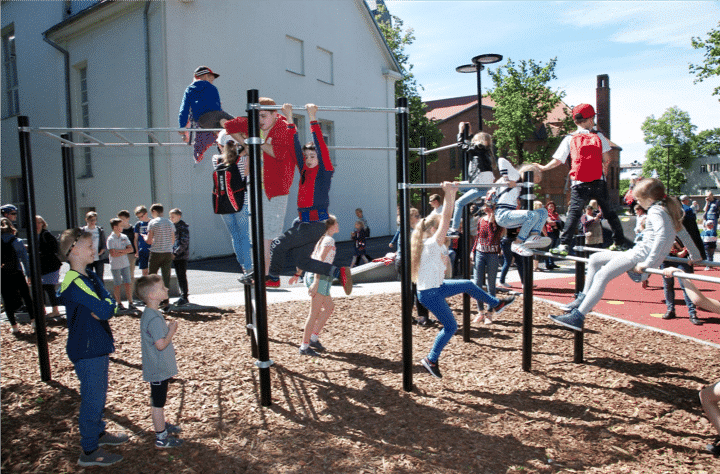
A school playground in Tartu Mart Reiniku kool. Photo by Ove Maidla
It clearly emerges how Participatory Budgeting is a wonderful exercise of democracy in the spirit of Open Government Partnerships (OGP). As we have previously addressed, healthy democratic practices must go beyond the ballot box. In this way, institutional trust is cultivated as the tie that binds citizens and policy makers. For the first, perceptions of being cared for by administrators improve, for they act in the public’s best interest. The latter, on the other hand, need such legitimisation to support the decisions they take, and the impact these have on the community as a whole.
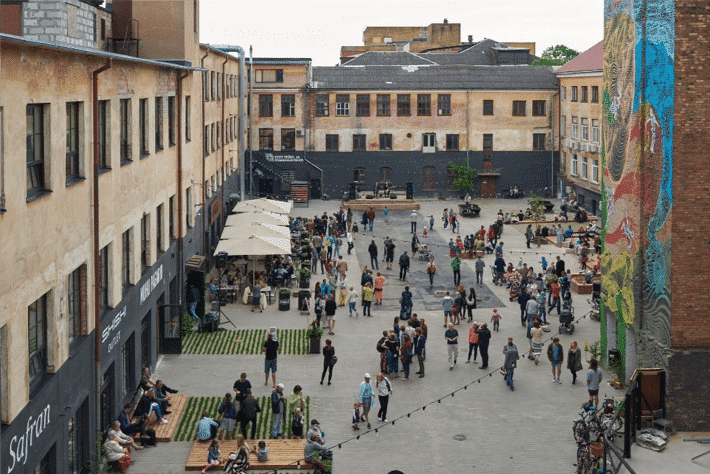
Winning idea 2016 of Tartu PB : building a pocket park to a courtyard of a former factory – Aparaaditehas. Photo: Rasmus Põld
Look at the other winning ideas of Tartu PB here!
Such relationship is preserved and cherished when expectations of the public and policy propositions match as close as possible. “The value of Participatory Budgeting is exactly that it words out very clearly the problems and needs of a community, helping local governments to address them,” Kristina Reinsalu outlines.
“It is a good learning-by-doing exercise for both sides. Citizens become more motivated in voicing their expectations and concerns, and they do so in a conscious way, in a formal framework. Furthermore, they also take up more responsibility on themselves, and solve many smaller issues on their own. For local governments, instead, the process is an effective training on informing, engaging, and dealing with different sets of expectations,” Reinsalu explains.
How does Participatory Budgeting work in Tartu
Tartu is not the only place in the world where Participatory Budgeting or similar initiatives are active. By now, the practice has rapidly spread across the globe, starting from Porto Alegre (Brazil) in the late 80s. Despite initially being a sort of Latin American phenomenon, it is now a common tool for community involvement in municipalities across Europe, the United States, South-East Asia, and Africa. Among these, Tartu can pride itself with a proven track record of successful citizen engagement.
200 000 EUR are up for allocation, accounting for about 1% of the city’s yearly investment budget. In seven years of activity, twelve projects have already seen the light or are currently under development as results of the latest editions. From beginning to end, process roll out is simple and streamlined to favour clarity and conciseness.
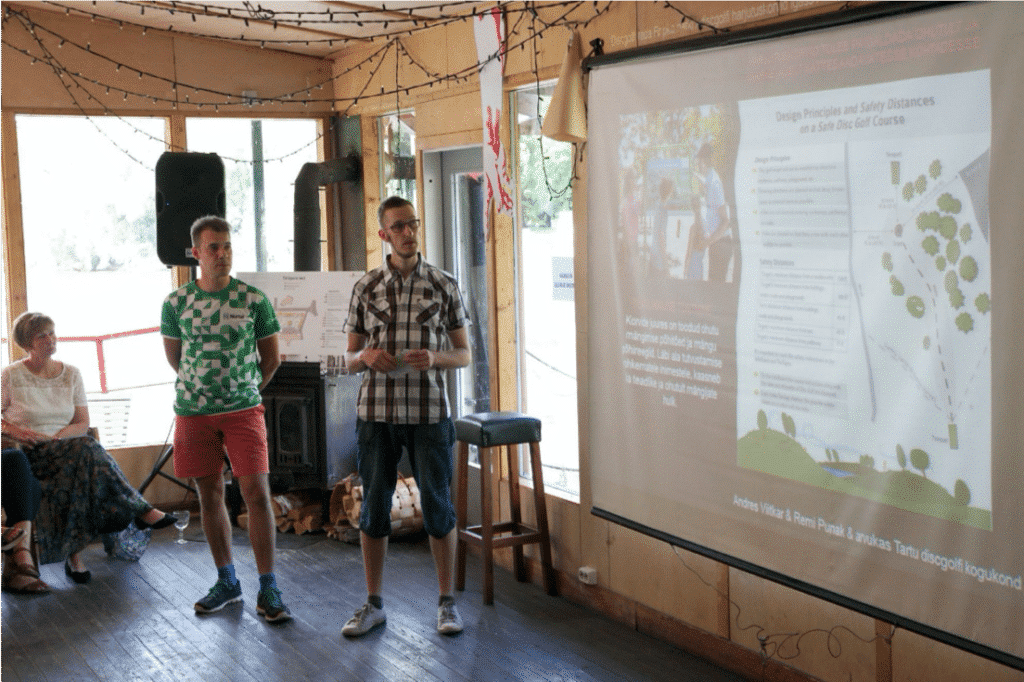
Presentation of ideas at Tartu PB. Photo by Ove Maidla
It is divided into six stages, going as follows:
- Call for ideas, where all citizens can formulate and initially present their proposals. These should regard tangible developments in the city space, and be mindful of inclusivity and the community’s public interest;
- Expert opinions on ideas, where professionals in the relevant fields will conduct feasibility assessments of the proposals presented;
- Discussions, where experts and proponents confront each other on the ideas to be shortlisted;
- Presentation of ideas, with the shortlisted proposals being introduced to the public on the municipality’s webpages, on social media, and in other physical forms aimed to inform the citizenry;
- Public voting, carried out among the shortlisted ideas, open to the whole polity of residents, and taking place both online via the information system VOLIS and offline;
- Implementation, the final stage, where administrators commit to the realisation of the two winning ideas after public voting.
One comprehensive approach, many social returns
Beyond serving the purpose of fostering citizen engagement, the initiative is a great chance to improve the digital skills and economic consciousness of the local population. The deployment of VOLIS, the online information systemfor local municipalities in Estonia, allows people to constantly keep track of the stages of the process, as well as keeping at a glance all relevant information to propose, deliberate, vote.

Photo: AdobeStock
“Participation is facilitated by ICT tools and their intrinsic capacity to reach a wider audience – making available, as a consequence, a broader feedback and pool of opinions,” Reinsalu says. At the same time, Participatory Budgeting dramatically enhances citizens’ comprehension of the municipal budget and the way this is configured, analysed, allocated. “This renewed understanding stems from political and civic culture, which needs its time to evolve. However, it is very useful to reconcile the two sides of the equation. When both citizens and governments fully grasp their respective roles and responsibilities, this partnership is deemed to generate great value for the community,” Reinsalu continues.
Participatory Budgeting stands out as one of the best practices local governments can implement quickly and low cost to redefine the supply/demand relation in civic participation and decision making. By looking at citizens as invaluable partners for policy formulation, administrators have the chance to unlock unique, first-hand expertise. This set of resources can dramatically increase citizen satisfaction and foster community building, as well as cooperation and trust in institutions.

A meeting and joint brainstorming of community leaders and Tartu City Government. Photo: Ove Maidla
And for those who believe it can’t happen anywhere else, fear no more. “What matters is motivation, not town size or geography, levels of urbanism or economic welfare. Not even money is that important, after all. Other than Tartu, Estonian local champions are rural municipalities, competing to get smarter and more innovative to attract constituents, taxpayers. It means that, when and where the best intentions are in place, transferability and sustainability are not an issue in Participatory Budgeting,” Reinsalu concludes. One step closer to seeing citizen engagement improve in more and more local governments, also outside Estonia.
Would you like to know more about Participatory Budgeting and how e-Governance Academy can help you improve your relationship with citizens? Please contact Kristina Reinsalu!


















